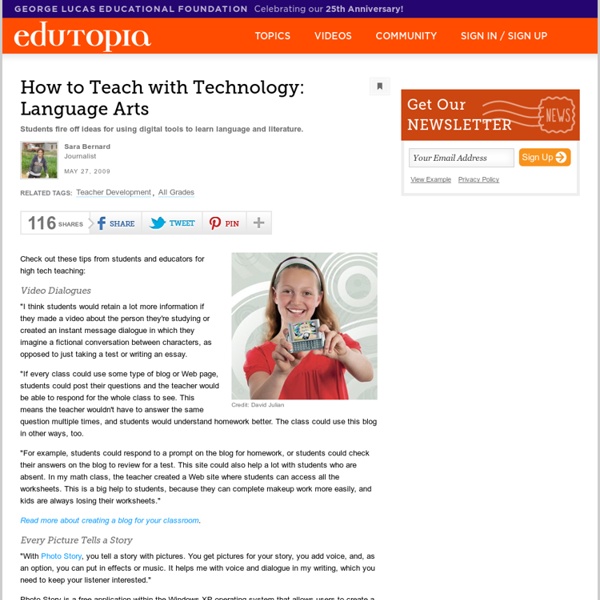How to Teach with Technology: Language Arts

Popular Technology Resources for Reading & Language Arts (K-12
Women's History Month Women's History Month (March) is here! Make sure you have the materials to help you explore the varied lives and contributions of amazing American women, from historical figures (Susan B. Anthony, Eleanor Roosevelt, and Harriet Tubman) and the Women's Suffrage Movement of the 19th century, to the artists, athletes, politicians, scientists, and inventors of yesterday and today! Videos Interested in using different types of media in your classroom? We have a growing collection of videos, with related activities, for holidays and events, including: slavery & the Civil War, American History, U.S. March Calendar of Events March is full of events that you can incorporate into your standard curriculum. Coding & Computer Science Introduce your students to basic coding and computer science!
How Twitter in the Classroom is Boosting Student Engagement
Professors who wish to engage students during large lectures face an uphill battle. Not only is it a logistical impossibility for 200+ students to actively participate in a 90 minute lecture, but the downward sloping cone-shape of a lecture hall induces a one-to-many conversation. This problem is compounded by the recent budget cuts that have squeezed ever more students into each room. Fortunately, educators (including myself) have found that Twitter is an effective way to broaden participation in lecture. Increased Participation Classroom shyness is like a blackhole: Once silence takes over, it never lets go. That's why, Dr. During lecture, students tweet comments or questions via laptop or cell phone, while the TA and Dr. Students in another Twitter-friendly classroom at Purdue University agree that digital communication helps overcome the shyness barrier. A Community of Learners Conclusion More social media resources from Mashable: Image courtesy of iStockphoto, lisapics
ESL Technology.com | Technology related to teaching and learning English as a Second Language (ESL)
I Love That Teaching Idea!
Enhancing Education through Technology (Ed-Tech) State Program
Enhancing Education through Technology (Ed-Tech) State Program Program Office: Office of School Support and Rural Programs CFDA Number: 84.318Program Type: Formula GrantsAlso Known As: Ed Tech State Program, Ed Tech; EETT The primary goal of this program is to improve student achievement through the use of technology in elementary and secondary schools. Local activities include the support of continuing, sustained professional development programs and public-private partnerships. Under the Ed-Tech program, the U.S. States may retain up to 5 percent of their allocations for State-level activities, and must distribute one-half of the remainder by formula to eligible local educational agencies and the other one-half competitively to eligible local entities.
Related:
Related:



